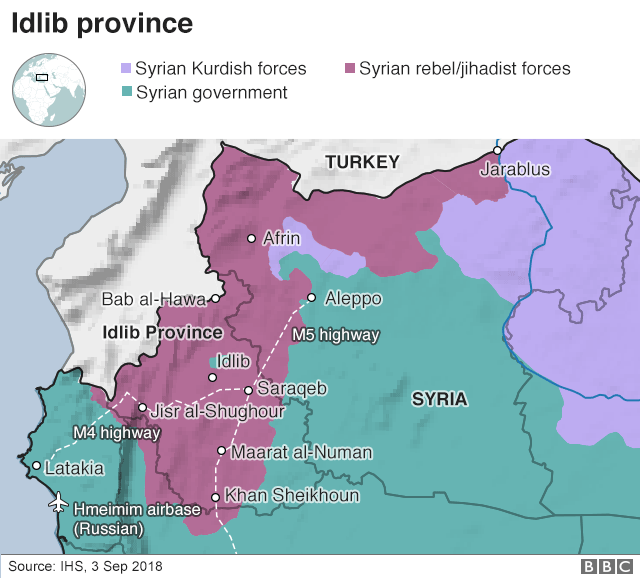I've listened to The Righteous Brothers sing Unchained Melody too many times to count, and it still gives me chills. The story of one man's passion for a woman. I've heard it sung by Elvis and others, but never fully instrumental. Enjoy!
Have a great weekend!
Friday, November 30, 2018
Officer Down

Rest in Peace Bro…We Got The Watch
Corrections Officer Armando Gallegos, Jr.
California Department of Corrections and Rehabilitation, California
End of Watch Friday, September 14, 2018
Incident Date Saturday, April 21, 2018
Weapon Person
Offender In custody
Corrections Officer Armando Gallegos succumbed to injuries sustained at approximately 3:30 pm on April 21st, 2018 when he was attacked by multiple inmates at the Kern Valley State Prison.
He and another officer were attempting to search an inmate in the dayroom of the prison's Minimum-Support Facility. The inmate attacked Officer Gallegos and was then joined by 11 other inmates who continued to severely beat him and the other officer.
The inmates continued to assault him after responding officers intervened with physical force and pepper spray. All of the inmates were eventually subdued. Officer Gallegos was transported to a local hospital suffering from a broken nose, head injuries, and fractured vertebrae. He eventually released from the hospital to recover at home. He suffered a complication on September 14th, 2018, and suddenly collapsed. He was returned to the hospital where he passed away.
CDCR investigators recommended attempted homicide charges on seven of the inmates following the assault.
Officer Gallegos was a U.S Navy veteran and had served with the California Department of Corrections and Rehabilitation for 13 years.
Nemo me impune lacessit
Day is done, Gone the sun, From the lake, From the hills, From the sky. All is well, Safely rest, God is nigh.
Thursday, November 29, 2018
I guess the author wants money before she kicks the bucket...
In college I saw the book The Handmaid's Tale in the book store. I have to say it didn't peak my interest and I put it down.
Two years ago I was sick and saw Hulu stared a series based on the novel, and I figured I'll give it a try. So my two dogs and I laid in bed and gave The Handmaid's Tail an hour. An hour of my life. I was quite annoyed at the I would never get that hour of my life back.
Perhaps the book is more interesting, but the first episode was worthless to me. But after hearing the reviews, about it being so chilling during the Trump administration, I was convinced it would win multiple awards. I was right.
Now the author is going to write a sequel to the book. Not surprised. I wonder if it will track the current Hulu series:
A few years back a lying slut named Sandra Flute perjured herself in front of Congress. She actually went up and said what was bankrupting her at Georgetown Law School was not the thirty thousand dollar tuition but the fact the student health plan would not cover the pill. To my shock, National Public Radio actually did some "journalism" and looked into her ridiculous claim. They went to a Target store a few miles from the campus and discovered the pill cost all of nine dollars a month. A month. I'll lay nine bucks the lying slut spends more than that at Starbucks every week.
By your own words Ms. Atwood, we have made a lot of process in recent time. So if you want to write a dystopian novel, be my guest. But please, leave the feminist propaganda from NARAL and NOW out. It's tiresome.
Two years ago I was sick and saw Hulu stared a series based on the novel, and I figured I'll give it a try. So my two dogs and I laid in bed and gave The Handmaid's Tail an hour. An hour of my life. I was quite annoyed at the I would never get that hour of my life back.
Perhaps the book is more interesting, but the first episode was worthless to me. But after hearing the reviews, about it being so chilling during the Trump administration, I was convinced it would win multiple awards. I was right.
Now the author is going to write a sequel to the book. Not surprised. I wonder if it will track the current Hulu series:
Margaret Atwood to write ‘Handmaid’s Tale’ sequelOK, what inspirations are you talking about. Hey, you like this type of fiction, be my guest. But last time I checked no one is denying women in America access to birth control, or forcing pregnant women to carry children to full term after they have been raped. If I'm on drugs, show me. There are some religious groups refusing to pay for birth control such as the pill, but no one is stopping a woman from getting this common, low cost contraceptive.
For decades, ardent fans of Margaret Atwood’s dystopian classic, “The Handmaid’s Tale,” have been demanding a sequel. And for years, Atwood has demurred.
But now Atwood has decided to continue the tale, more than three decades after it was first published. On Wednesday, she announced that she will publish “The Testaments,” a sequel to “The Handmaid’s Tale,” in September 2019. Set 15 years after the final scene of “The Handmaid’s Tale,” the novel features three female narrators.
In a statement released by her publisher, Atwood said she decided to return to the story not just because of her voracious fans, but because she wanted to explore the eerie parallels between her imagined dystopia and our current political climate.
“Dear Readers: Everything you’ve ever asked me about Gilead and its inner workings is the inspiration for this book,” she said. “Well, almost everything! The other inspiration is the world we’ve been living in...”
A few years back a lying slut named Sandra Flute perjured herself in front of Congress. She actually went up and said what was bankrupting her at Georgetown Law School was not the thirty thousand dollar tuition but the fact the student health plan would not cover the pill. To my shock, National Public Radio actually did some "journalism" and looked into her ridiculous claim. They went to a Target store a few miles from the campus and discovered the pill cost all of nine dollars a month. A month. I'll lay nine bucks the lying slut spends more than that at Starbucks every week.
...“The Handmaid’s Tale,” which takes place in a futuristic theocratic state called Gilead where women are treated as property and used as reproductive serfs, has become almost a cultural shorthand for patriarchal oppression. Women dressed in red robes and white bonnets, the costumes that Atwood’s handmaids wear, have gathered in protests around the country to voice their opposition to policies that restrict women’s access to abortion and health care.Again, what "policies" restrict access to abortion? Last time I checked Planned Parenthood has 650 clinics in the United States and preformed over 325, 000 abortions last year. What health care is being denied? Again, such dribble, but then again, we are talking the NY Times.
Atwood has often said that her novel was based not on some horrific vision of the future, but on real historical eras in which women were denied basic rights, as well as current theocratic patriarchal societies around the world.
“In Western society, you don’t have to go back very far to find alot of the things I put in,” Atwood said in an interview with the New York Times earlier this year, when she spoke about the growing interest in feminist dystopian stories. “How recently did women gain the right to control their own property?”
Atwood said the novel’s recent resurgence reflected our cultural preoccupation with imagining disastrous futures as a way of digesting current anxieties about political extremism and the fate of the planet.
“We live in an age of dystopias, not just because of women’s matters but because of what’s happening to the planet,” she said. “Things are not right...”
By your own words Ms. Atwood, we have made a lot of process in recent time. So if you want to write a dystopian novel, be my guest. But please, leave the feminist propaganda from NARAL and NOW out. It's tiresome.
Wednesday, November 28, 2018
Officer Down

Police Officer Oscar Adrian ReyesRest in Peace Bro…We Got The Watch
Costa Mesa Police Department, California
End of Watch Wednesday, September 12, 2018
Age 43
Tour 13 years
Badge 543
Police Officer Oscar Reyes suffered a fatal heart attack after participating in the Orange County Traffic Officers Association Motor Rodeo at Huntington State Beach.
He had participated in several difficult training and skills competitions during the event and collapsed after returning home. He was transported to a local hospital where he was pronounced dead.
Officer Reyes had served with the Costa Mesa Police Department for 13 years. He is survived by his wife and three children.
Nemo me impune lacessit
Day is done, Gone the sun, From the lake, From the hills, From the sky. All is well, Safely rest, God is nigh.
Monday, November 26, 2018
Officer Down


Police Officer David Alexander TinsleyRest in Peace Bro…We Got The Watch
Fort Wayne Police Department, Indiana
End of Watch Tuesday, September 11, 2018
Police Officer David Tinsley suffered a fatal heart attack while searching for a suspect following a vehicle pursuit and foot pursuit of a suspect in a stolen car.
The man drove onto a the Rivergreenway footpath along the St. Mary's River in the area of Candlelite Court where he crashed and fled on foot. Officer Tinsley assisted with a canine track of the suspect until the man was taken into custody. He was returning to his patrol car where he suddenly collapsed.
Other officers began CPR and he was transported to St. Joseph Hospital where he was pronounced dead shortly after midnight.
Officer Tinsley had served with the Fort Wayne Police Department for 16 years.
Nemo me impune lacessit
Day is done, Gone the sun, From the
lake, From the hills, From the sky. All is well, Safely rest, God is nigh.
What's Going On In The World Today 181126
HYPERLINKS MAY REQUIRE AN EMAIL:
USA
China Looks at U.S. Tech-Limiting Measures and Sees Gunboat Diplomacy
Highlights
- As China attempts to achieve technological parity for reasons of national security, the U.S. government will continue to deploy a wide array of tools against these efforts, particularly Beijing's attempts to obtain trade secrets illegally.
- These U.S. actions, however, will merely convince Beijing to break its dependence on Western technology by any means possible, since they vividly remind China about how a technologically superior West victimized it during the days of gunboat diplomacy.
- Fearful for its own future in the wake of Washington's actions, Russia will also strive to obtain technology by any means possible.
The last Opium War ended 176 years ago, but Beijing remembers the battle well — particularly the West's penchant for gunboat diplomacy. Memories of Western coercion and blockades have already prompted China to bolster the country's navy and take aggressive steps in the South China Sea to fulfill two of its overriding strategic imperatives: prevent any encroachment on the eastern coast and secure maritime trade routes...
Building a More Efficient World
At its heart, geopolitics is a study of relative advantages. Geographic features can hinder or empower a country in pursuing its imperatives such that, as Halford Mackinder put it, there is "no such thing as equality of opportunity for the nations." Nevertheless, geography is not deterministic; advances in technology can even the playing field or turn the tides for even the most geographically disadvantaged nation. Infrastructure offers a prime example of this phenomenon. Throughout history, infrastructure has been central to a nation's cohesion and economic growth, connecting countries to themselves and to one another. In fact, despite their many bitter differences, the two major-party candidates for the U.S. presidency found a semblance of common ground in the need to update their country's aging infrastructure.
But though the need for interconnection has been a constant, it has manifested in different ways over time. As the global economy changes with the advent of new technologies, so, too, does infrastructure. Inland rivers, railways and highways have all played a role in increasing the efficiency of moving goods and people through the years, taking advantage of or augmenting existing geographic features. Even seemingly small technological advances, such as the container ship, can revolutionize long-standing modes of transportation. Now, as the fourth industrial revolution unfolds, the demands on infrastructure will shift again, and with them, the global order.
Rivers: A Traditional Advantage
For centuries, inland rivers were the lifelines of nations and empires. Cutting from the top of Minnesota to the Gulf Coast of Louisiana, the Mississippi River is (literally) central to the United States and its enduring influence in the world. Along with its rich historical and cultural significance, the Mississippi River Basin offers the United States a wide swath of fertile land and navigable rivers, allowing the country an inexpensive means to transport goods within and beyond its borders. Inland waterways also underpinned the success of Northern European countries such as Germany and the Netherlands, though, unlike in the United States, the rivers and the economic competition they inspired divided the Continent rather than uniting it...
AFRICA
Pentagon to cut troops in Africa as focus shifts to China, Russia
WASHINGTON (Reuters) - The U.S. military will withdraw hundreds of troops focused on counterterrorism operations in Africa over the next several years to support the Pentagon’s increased focus on countering threats from China and Russia, officials said on Thursday.
Earlier this year, the U.S. military put countering China and Russia at the center of a new national defense strategy, the latest sign of shifting priorities after more than a decade and a half of focusing on the fight against Islamist militants.
“This realignment specifically projects to reduce forces by about 10 percent over the next several years - representing a fraction of the overall 7,200 DoD personnel operating in Africa,” Commander Candice Tresch, a Pentagon spokeswoman, told Reuters.
Tresch said the cuts would leave “counter-violent extremist organization” activities largely untouched in several countries, including Somalia, Djibouti and Libya...
ASIA
India Looks for a Strategic Edge in Its Indian Ocean Contest With China
Highlights
- China's increased presence in the Indian Ocean is driving India into a race for dominance in the region.
- India's broad security commitments prevent it from meeting its naval ambitions, forcing it to rely on other strategic measures to challenge China's penetration into the region.
- By taking advantage of geographic choke points, building up its influence with states inside and outside the region, and seeking closer cooperation with the United States, India is positioning itself to better challenge
Editor's Note: This assessment is part of a series of analyses supporting Stratfor's upcoming 2019 Annual Forecast. These assessments are designed to provide more context and in-depth analysis on key developments in the coming year.
Throughout most of India's history, its rulers have emphasized land forces over sea power. Their domains were faced with the persistent threat of invasion from the northwest as well as the specter of internal strife. But the European colonial invasions by sea provided a rude awakening, and in the immediate aftermath of independence, New Delhi focused on the need for a powerful navy. However, conflict with Pakistan, internal dissent and border clashes with China reinforced the need for powerful ground forces. And China isn't just testing India on the land; it is also pushing into the Indian Ocean. To meet this challenge, India is strengthening its navy while maximizing its strategic thinking...
EUROPE
UK to double F-35 fleet with 17-jet order, Defence Secretary announces
The multi-million-pound contract signed will see the UK own 35 stealth jets by end of 2022 with Britain manufacturing 15% of the overall global order for 255 aircraft.
The UK is set to double its number of world-beating F-35 stealth jets after ordering 17 more aircraft, Defence Secretary Gavin Williamson has announced.
The 17 new F-35B aircraft will be delivered between 2020 and 2022 and will complement the 16 British aircraft currently based at RAF Marham and in the US, as well as two additional aircraft which are already on order.
Overall, the UK has committed to procure 138 aircraft over the life of the programme...
...The 17 jets being ordered are part of a $6 billion contract for 255 aircraft being built for the global F-35 enterprise...
...As the largest operator of F-35s outside of the US, the acquisition of 17 more Lightning aircraft underscores our commitment to the programme. This new contract demonstrates how our Armed Forces are equipped by DE&S with the latest equipment and support.
News of this latest order comes as F-35B aircraft are currently embarked on HMS Queen Elizabeth for flying trials in the US, which continue to progress well. The fighter jets will be jointly manned by the Royal Air Force and the Royal Navy and can operate from land and sea, forming a vital part of Carrier Strike when operating from the Queen Elizabeth Class aircraft carriers.
LATIN/SOUTH AMERICA
Latin America's Auto Giants Strive to Secure Markets
Highlights
- Mexico's auto sector will remain oriented toward the United States, particularly in the wake of the signing of the United States-Mexico-Canada Agreement.
- Brazil will continue its quest to find new export markets, as Mexico did three decades ago.
- Brazil's incoming administration will try to persuade members of the Mercosur trading bloc to allow each member state to sign its own bilateral free trade agreements.
If Brazil succeeds in lifting Mercosur's trade restrictions, the country's auto sector will target developing markets in Asia, Latin America and Africa, where Brazilian-made vehicles would be most competitive.
When it comes to Latin American automotive production, two giants dominate the scene: Mexico and Brazil. Together, they produced 6.8 million light and commercial vehicles last year, representing around 7 percent of the globe's total output. The two are also heavily integrated into global automotive supply chains, as Mexico's auto sector is closely linked to the United States, while Brazil's auto sector has tight connections to Argentina. Historically, however, the Mexican and Brazilian automotive industries developed in vastly different geopolitical environments. Mexico is an export-oriented powerhouse, shipping nearly 70 percent of its finished vehicle production to the United States. Brazil, on the other hand, mainly focuses on supplying its huge domestic market. And thanks to the new United States-Mexico-Canada Agreement (USMCA), the future of Mexico's automotive market clearly lies in the same place as its recent past: the U.S. domestic market. Brazil, by contrast, will take steps to eliminate the domestic and regional obstacles that are complicating its efforts to expand its exports of cars and parts...
Trump administration prepares to add Venezuela to list of state sponsors of terrorism
The Trump administration is preparing to add Venezuela to the U.S. list of state sponsors of terrorism in what would be a dramatic escalation against the socialist government of Nicolás Maduro, according to U.S. officials and internal government emails.
The list is reserved for governments accused of repeatedly providing “support for acts of international terrorism” and includes only Iran, North Korea, Sudan and Syria.
Republican lawmakers led by Sen. Marco Rubio (Fla.) have pushed for the designation, citing Venezuela’s alleged ties to Lebanese Hezbollah, the Revolutionary Armed Forces of Colombia, or FARC, and other groups.
Republicans have long accused Venezuela of having ties to terrorist organizations. But experts have played down the threat and strength of those connections. They warn that a designation that does not offer concrete evidence could weaken the legitimacy of the U.S. list, which critics say already is applied inconsistently...
“I suspect this will be based on hearsay and sources of questionable integrity,” said David Smilde, a senior fellow at the Washington Office on Latin America.
AFGHANISTAN
Afghanistan’s Rivers Could Be India’s Next Weapon Against Pakistan
New Delhi is funding an ambitious dam near Kabul that could reduce water flow to its rival downstream. The project might spark the world’s next conflict.
Most of Afghanistan is currently experiencing a 60 percent drop in the rain and snowfall needed for food production. The rapid expansion of Kabul’s population, extreme drought conditions across the country, and the specter of climate change have exacerbated the need for new water infrastructure. But building it is politically complicated; the Afghanistan-Pakistan border region is defined by its complex maze of transboundary rivers and there is no legal framework in place to avoid major conflict between the nations.
It’s no surprise, then, that in the Chahar Asiab district of Kabul, on a tributary of the Kabul River, the Maidan, work is scheduled to begin soon on the Shahtoot Dam. The dam will hold 146 million cubic meters of potable water for 2 million Kabul residents and irrigate 4,000 hectares of land. It will also provide drinking water for a new city on the outskirts of Kabul called Deh Sabz. Afghanistan is finally, after decades of devastating wars, in a position to begin to develop its economy and electricity from hydropower.
But this ambitious development is fueling fears downstream in Pakistan that the new dam will alter the flow of the Kabul River and reduce the water flows into Pakistan that could severely limit the country’s future access to water. The Pakistani media outlet Dawn has reported that there could be a 16 to 17 percent drop in water flow after the completion of the Shahtoot Dam and other planned dams.
Beyond reducing water flow to Pakistan, the Shahtoot Dam has a unique capacity to escalate tensions in the region thanks to its funding from India.Beyond reducing water flow to Pakistan, the Shahtoot Dam has a unique capacity to escalate tensions in the region thanks to its funding from India. India has made major investments in Afghanistan’s infrastructure in recent years—from highway construction to repair of government buildings and dams damaged by conflict...
CHINA
China using ‘gait recognition’ to ID people
BEIJING — Chinese authorities have begun deploying a new surveillance tool: “gait recognition” software that uses people’s body shapes and how they walk to identify them, even when their faces are hidden from cameras.
Already used by police on the streets of Beijing and Shanghai, “gait recognition” is part of apush across China to develop artificial-intelligence and data-driven surveillance that is raising concern about how far the technology will go.
Huang Yongzhen, the CEO of Watrix, said that its system can identify people from up to 165 feet away, even with their back turned or face covered. This can fill a gap in facial recognition, which needs close-up, high-resolution images of a person’s face to work.
“You don’t need people’s cooperation for us to be able to recognize their identity,” Huang said in an interview in his Beijing office. “Gait analysis can’t be fooled by simply limping, walking with splayed feet or hunching over, because we’re analyzing all the features of an entire body.”
Watrix announced last month that it had raised $14.5 million to accelerate the development and sale of its gait recognition technology, according to Chinese media reports.
In South China Sea, a display of U.S. Navy strength — and a message to Beijing
ABOARD THE USS RONALD REAGAN — As fighter jets roared off the flight deck and darted above the South China Sea, visitors onboard the carrier USS Ronald Reagan raised their phones for the inevitable selfies.
Among those clicking souvenir images was a lieutenant general from the Chinese People’s Liberation Army, who was part of a VIP guest list as the carrier moved through contested waters.
The carrier — which docked last week in Hong Kong in a good-faith gesture from Beijing — also offered a snapshot into challenges for the Pentagon in the Asia-Pacific region as China builds up its own naval prowess and ramps up efforts to solidify territorial demands.
The United States seeks to keep its place as the dominant naval power across East Asia, where Washington and its allies believe Beijing is trying to reorder international rules and military alliances in place since World War II...
IRAN
Why Iran's Government Will Bear the Weight of U.S. Sanctions
Highlights
- Iran's economy will enter a sharp recession in 2019, but Tehran can capably manage any political fallout that may follow.
- Economically, Iran will emphasize prudent management and protection of precious hard currency reserves while boosting domestic investment through its public sector and trying to continue financial sector reform.
- While it focuses on economic survival in the face of sanctions, however, Iran will make only limited progress on much-needed longer-term reforms, such as strengthening the private sector.
Iran's squabbling political factions will try to take advantage of the economic environment, but in the face of the crisis, they will work together to prioritize regime preservation.
Editor's Note: This assessment is part of a series of analyses supporting Stratfor's upcoming 2019 Annual Forecast. These assessments are designed to provide more context and in-depth analysis on key developments in the coming year.
A year ago on Iran's black market, one U.S. dollar would bring 41,000 Iranian rials. Today, it would take more than three times as many rials, about 125,000, to buy a dollar. One year ago, Iran was free to export as much oil as it was capable of producing. Today, the United States has reapplied sanctions related to both Iran's oil exports, which provide about a third of government revenue, and its financial dealings. And while the White House has granted sanctions waivers to a few of Iran's oil customers, the waivers are only temporary, ensuring that Iranian oil exports will fall further in 2019.
To put it bluntly, 2019 will be disastrous for Iran's economy, perhaps even precipitating significant economic and social unrest, much like the start of 2018. But while the Iranian economy will bend under the weight of sanctions, they will not break the Islamic republic. Iran's leadership has a long history of dealing with sanctions and economic isolation, and 40 years of practice has made the government particularly adept at survival...
IRAQ
Iraq: Oil Prices Plunge as Kirkuk's Production Comes Back on Line
The Big Picture
Iraq's federal government and the Kurdistan Regional Government have squabbled over oil revenue and resources for years, and they are still not cooperating. As Iraq's oil production continues to increase, the OPEC member is adding more oil to a market that has already overcompensated for sanctions on Iran. Going forward, Iraq's increased production will give Saudi Arabia more reason to push for another global cut in production.
Rising supply has caused oil prices to plunge in the past seven weeks. And thanks to Iraq, that growth in supply will not let up. On Nov. 16, a temporary deal between Iraq's federal government and the Kurdistan Regional Government (KRG) enabled the export of oil from the disputed province of Kirkuk through the Kurdistan-Turkey pipeline for the first time since June 2017. For now, the amount of oil is about 50,000 barrels per day (bpd), but the deal aims to boost it to 100,000 bpd. However, if Kirkuk's export levels return to normal, then 200,000 to 400,000 barrels of Iraqi oil could make its way to export markets each day...
ISRAEL
NOTHING SIGNIFICANT TO REPORT
KOREAN PENNSULEA
S. Korea sends tangerines to North in return for mushrooms
In this Nov. 11, 2018 photo, South Korean soldiers prepare to load boxes of tangerines near South Korea's Air Force cargo plane C-130 at the Jeju International Airport on Jeju Island, South Korea. South Korea has airlifted thousands of boxes of tangerines to North Korea in return for the North's large shipments of pine mushrooms in September.(Park Ji-ho/Yonhap via AP)
SEOUL, South Korea (AP) — South Korea has airlifted 200 tons of tangerines to North Korea in return for shipments of pine mushrooms by the North in September, officials said Monday.
South Korean military planes flew to Pyongyang, North Korea’s capital, on Sunday and Monday to deliver the fruit from the southern island of Jeju, according to Seoul’s Defense Ministry. The airlifts are another sign that liberal South Korean President Moon Jae-in is moving ahead with efforts to improve ties with North Korea despite stalemated global diplomacy on the North’s nuclear program.
After a summit meeting between the Koreas in Pyongyang in September, North Korea gave South Korea 2 tons of pine mushrooms as a goodwill gesture. Pine mushrooms are white and brown fungi that are considered a healthy delicacy in both Koreas and other Asian countries. They are one of the North’s most prized regional products, and the country shipped them to South Korea in 2000 and 2007 after previous summit talks...
North Korea’s Yongbyon Nuclear Scientific Research Center: 5 MWe Reactor Unlikely Operating
Recent commercial satellite imagery of North Korea’s Yongbyon Nuclear Scientific Research Center indicates that although a minor flow of water could be detected from the pre-existing cooling water outfall pipe of the 5 MWe reactor, such a low flow is more likely indicative of residual waste heat removal from past reactor operations than any new reactor operations.
Dredging continues near the reactor’s secondary cooling system, and by November, that dredged material had blocked nearly all of the river channel serving the pump house. Minimal movements of vehicles and equipment have taken place around both the 5 MWe reactor and the Experimental Light Water Reactor (ELWR). Notably, between September 27 and November 2, new excavation had started along the road east of the 5 MWe reactor, the purpose of which is unclear.
RUSSIA
Finland, Norway press Russia on suspected GPS jamming during NATO drill
HELSINKI – Nordic governments are primed to raise suspected GPS jamming of military exercises and communications with Russia.
Finland and Norway intend to launch diplomatic discussions with Moscow over suspected GPS signal-jamming by Russia’s military over recent weeks that impacted areas in northern Norway where NATO-led Trident Juncture maneuvers were being conducted.
Norway’s defense intelligence agency said it tracked the source of the signal-jamming to a Russian military base on the nearby, heavily fortified Kola Peninsula. Finland’s military intelligence said Norway’s analysis mirrors its own investigations and evaluations.
Scrambled GPS signals were first detected during NATO’s large-scale Trident Juncture exercises in Norway at the end of October. Defense and civil aviation chiefs in Finland and Norway warned that the GPS jamming posed a serious risk to both military and commercial aircraft using the affected airspace in the High North.
Finland’s Ministry of Foreign Affairs (MFA) has presented the national parliament’s Committee on Foreign Affairs (CFA) a preliminary report on the jamming. The MFA is expected to furnish the panel with a more conclusive report by the end of November.
The GPS signal-jamming issue is being discussed with the Russian Federation “through diplomatic channels”, said Sari Rautio, director of the MFA’s unit for security policy and crisis management...
MIDDLE EAST GENERAL
In Iraq and Syria, Imagery of Nighttime Electricity Use Illuminates the Impacts of War
The outbreak of conflict in Syria in 2011, which quickly escalated to a full-blown civil war, has done tremendous damage to the country. One compelling way to visualize the devastation is using satellite night-light imagery.
Imagery that depicts electricity use at night is an illuminating tool that can be used to track population trends, economic developments and geopolitical shifts. One of the most widely known examples of this approach is the set of images that highlight the stark difference in nighttime electricity use between South Korea and the less-developed North Korea.
The image below represents electricity use in the Levant area of the Middle East by depicting the evolving intensity of night lights between 2012 and 2016. As millions of refugees fled Syria and warfare destroyed the country's electricity network, the night-light intensity in Syria dropped precipitously between 2012 and 2016...
Trump Ramped Up Drone Strikes in America’s Shadow Wars
In his first two years in office, Donald Trump launched 238 drone strikes in Yemen, Pakistan, and Somalia—way beyond what the ‘Drone President’ Barack Obama did.
The U.S. president inherited a remotely piloted weapon of death from his predecessor. In his earliest period in office, he used this lethal robot force promiscuously, sharply escalating attacks on suspected terrorists away from his declared wars. As time went on, his use of drone strikes in those places diminished.
Barack Obama? Well, yes. But a look at available statistics for drone strikes on America’s undeclared battlefield shows that this description also applies to Donald Trump.
In 2009 and 2010, Obama launched 186 drone strikes on Yemen, Somalia, and especially Pakistan. Donald Trump’s drone strikes during his own first two years on the three pivotal undeclared battlefields, however, eclipse Obama’s—but without a corresponding reputation for robot-delivered bloodshed, or even anyone taking much notice. In 2017 and 2018 to date, Trump has launched 238 drone strikes there, according to data provided to The Daily Beast by U.S. Central Command (CENTCOM) and the drone-watchers at the Bureau of Investigative Journalism in London...
The Threat Posed By Houthi Rebel UAVs
For several months, Houthi rebels in Yemen have made grandiose announcements that their unmanned aerial vehicles (UAV) are targeting and striking airports, oil refineries and military bases. The Saudi-led coalition fighting the Houthis dispute this, and there is little concrete evidence of the alleged attacks. But even though the threat has yet to be realized, it should not be dismissed.
The Houthis lack an effective manned air force and face an opposition with both formidable airpower and advanced air defenses in the form of Patriot missile batteries. To counter this, they rely on ballistic missiles and UAVs for offensive airpower.
In 2017, Houthi forces unveiled four types of small, supposedly home-produced UAVs, all of which appear to have been supplied by Iran. Among them are the Qasef-1 (Striker-1), a locally assembled version of the Iran Aircraft Manufacturing Industrial Co.’s (HESA) Ababil, with GPS guidance. It carries a 15-kg (33-lb.) kamikaze warhead that is said to have a range of 150 km (93 mi.). A study of a captured Qasef by Conflict Armament Research indicates that a key mission was to target the Patriot systems’ radar.
A key mission of the Houthi’s Qasef UAV is to target Patriot systems’ radar
Evidence does not support Houthi assertions that it struck UAE airports
This year, Houthis have continued to strike at the coalition. Last February, the rebels claimed to have attacked a Saudi Patriot Advanced Capability battery with a swarm of drones before destroying it with a ballistic missile. They followed this up two weeks later by stating they had destroyed a United Arab Emirates (UAE) Patriot battery near Marib. In both cases, the coalition forces denied any casualties but did report shooting down ballistic missiles...
Syria war: Aleppo 'gas attack' sparks Russia strikes
Russia has carried out air strikes against Syrian rebels it accuses of launching a chemical attack on the government-held city of Aleppo.
Both Syria and its Russian allies say shells carrying toxic gas injured about 100 people late on Saturday.
State media showed images of Aleppo residents being treated in hospital as they struggled to breathe.
The rebels deny carrying out a chemical strike and say the claims are a pretext for an attack on opposition-held areas.
Parts of the Aleppo region, as well as the neighbouring provinces of Hama and Idlib, are controlled by Turkish-backed rebels and jihadists...
CYBER ISSUES
Visualizing the Geopolitics of Cyberspace
Access to the internet varies around the globe. Beyond the physical infrastructure required to connect, regional access depends largely on a country's policies and values. Equally, internet freedoms typically align with a country's level of political freedom...
INTEL GENERAL
NOTHING SIGNIFICANT TO REPORT
TERRORISM
NOTHING SIGNIFICANT TO REPORT
MISC
Why American Oil Hasn’tBeen a Total Game-Changer
The U.S. is now the world’s top producer, but Saudi Arabia still holds the key to crude prices.
The United States in recent years has stunned the globe by becoming the world’s biggest oil producer, a remarkable about-face for a country that a decade ago reeled from reliance on pricey imported crude. So why does it seem so hard to translate that so-called energy dominance from rhetoric into reality? President Donald Trump’s tweet-borne rage with the oil-price rollercoaster in recent months, and OPEC’s subsequent efforts to fix the market by adjusting the amount of oil it pumps, illustrates the frustration many in Washington feel when they see what looks like a huge U.S. energy boom failing to deliver on promises of dominance or independence.
But the reality is that the notion of energy dominance, as repeatedly trumpeted by the administration, is at heart a hollow idea. Even America’s position as the top producer in the world isn’t enough to shield it from rising prices, free it from Middle East entanglements, strangle foes with sanctions, or even give it many additional foreignpolicy tools. The ultimate irony is that what created the U.S. energy revolution—nimble, private sector companies using new technologies to extract previously untapped crude—keeps the United States from wielding its energy strength in the way that Saudi Arabia, Russia, and other big producers with state-owned firms willing to put geopolitics above profits do.
“Ironically, the precise strength of the U.S. energy sector—that it is driven by the market and not by a government—also means that it is not a stick to beat people with,” said Bruce Jones, the director of the foreign-policy program at the Brookings Institution...
Korea and alliances.....
I've posted countless times on issues with South and North Korea. The peninsula has fascinated me since I was first posted there in August 1988. While I am, to the least, uncertain of the latest Kim's offer, I do like the fact his government is talking. Reading reports and watching specials on North Korea, the isolation and propaganda inflicted on its people is nothing short of astonishing. Most people there have no idea that man landed on the moon almost fifty years ago.
I would think, if we can get a foothold in North Korea, showing the people, and the government, what awaits them if they open up. To paraphrase President Reagan, "Mr. Kim, open this gate. Mr. Kim, tear down this fence!"
I found this article from Foreign Policy when I was reviewing 38 North, a website that covers Korean issues. Very well done, and I'll leave it without comment.
\
[1]
I would think, if we can get a foothold in North Korea, showing the people, and the government, what awaits them if they open up. To paraphrase President Reagan, "Mr. Kim, open this gate. Mr. Kim, tear down this fence!"
I found this article from Foreign Policy when I was reviewing 38 North, a website that covers Korean issues. Very well done, and I'll leave it without comment.
\
Imagining a New US-South Korean Security Architecture
- BY: RICHARD SOKOLSKY AND DANIEL R. DEPETRIS
- NOVEMBER 15, 2018
- COMMENTARY, FOREIGN AFFAIRS
Declaring an official end to the Korean War should not be seen as a slippery slope to the withdrawal of the 28,500 US troops in South Korea or the end of the US-ROK alliance, although it would generate pressure to reduce the American military footprint on the peninsula and shift more of the collective defense burden to the South. There are alternative security and military arrangements the US and South Korea can and should put in place if North Korea ceases to be a military threat and an enduring North-South reconciliation takes hold on the peninsula. These changes are feasible and affordable and would maintain stability and the balance of power in Northeast Asia.
A Slippery Slope?
US opposition to an end of war declaration on the Korean Peninsula has become a major impediment to progress on North Korean denuclearization. One reason for this stance is tactical: the Trump administration believes that the North’s desire for such a declaration gives it leverage to press Pyongyang for significant and immediate steps toward denuclearization, in particular, a comprehensive declaration of the location of its nuclear weapons and production sites. The other reason is strategic, as many in the US national security establishment believe that a formal end of the Korean War would deprive the United States of its longstanding rationale for the US-ROK alliance and the presence of US troops in South Korea: maintaining deterrence of North Korean aggression and a military and geopolitical counterweight to China’s rising power (often cloaked in the rhetoric of preserving regional stability).
Linking the timing of a peace declaration to North Korean moves on denuclearization may or may not prove to have tactical value. But fears that ending the formal state of hostilities will automatically lead to US military disengagement from Northeast Asia and the end of the American military footprint on the Korean Peninsula are misplaced. Granted, sooner or later, if peace and security become the “new normal” on the peninsula and the two Koreas continue down the path of reconciliation, pressure could grow for reductions in and possibly the complete withdrawal of the 28,500 US troops in South Korea. Indeed, President Trump has already questioned the need for maintaining US troops in Korea and the US-ROK alliance.
Negotiations with North Korea on confidence building measures (CBMs) and conventional force reductions might also ultimately affect the US military posture on the peninsula. This presence has provided a guarantee of deterrence, security and stability in the face of North Korean hostility. But what if North Korea ceases to pose a threat to South Korea and US forces are drawn down or withdrawn completely from the South? Are there alternative defense and security arrangements that could help preserve peace and security in the region and deter Chinese adventurism?
Alliances Adapt or They Die
As history has repeatedly demonstrated, alliances that refuse to respond to changing geopolitical conditions or adapt too slowly are at serious risk of collapse. Some, like the Southeast Asia Treaty Organization (SEATO) and the Central Treaty Organization (CENTO) established in the 1950s, collapse because they either outlived their utility or were unable to fulfill the purposes for which they were intended; other alliances modernize their roles and missions, membership, and internal structures and processes in an effort to maintain their value and relevance.
Over the years, the North Atlantic Treaty Organization (NATO) has adapted its strategic concept, force posture and plans, and internal procedures—though often with great difficulty—to its changing security environment and strategic priorities. The US-Japan Mutual Security Treaty is far more balanced and reciprocal in its obligations today than it was 40 years ago. There are far fewer US troops stationed on NATO territory and in Japan today than there were during the height of the Cold War. The US-ROK alliance, codified in the October 1953 Mutual Defense Treaty (MDT), is one of the US’ more successful alliances, but it, too, has not remained static. In addition to its core mission of deterring North Korean aggression against the South, US and South Korean forces have broadened their security cooperation to include Iraq and Afghanistan. Changes have been made over the years to annual US-ROK military exercises. US force levels in South Korea have gone up and down depending on the geopolitical environment, both in and outside of Northeast Asia. In 1991, the first Bush administration redeployed several thousand US combat troops from the South along with the removal of all nuclear weapons based on ROK territory. Several thousand American soldiers from the 2nd Infantry Division were relocated from South Korea to Iraq in 2004, a change in force structure that occurred less than a year after Defense Secretary Donald Rumsfeld stated that Seoul no longer required the US military to deter a North Korean invasion.
Operational control (OPCON) of South Korean forces has also evolved. For two decades after the Korean War, the OPCON of almost all US and ROK forces in situations of war and peace was retained by the UN Command, which was commanded by a US general. In 1978, the Combined Forces Command (CFC), which was also led by a US general, assumed both armistice and wartime OPCON of US and ROK forces. Yet as ROK military capabilities improved, OPCON of South Korean forces during the Korean War Armistice was transferred from CFC to the South Korean joint chiefs of staff in 1994. There will soon come a time when a ROK-led military command is given full OPCON, an objective Defense Secretary Jim Mattis and ROK Minister of National Defense Jeong Kyeong-doo reiterated at the latest Security Consultative Committee meeting.
If the bilateral security relationship is to survive, the US and South Korea will need to engage in a difficult but necessary conversation about alliance restructuring if a peace regime on the Korean Peninsula is formed. The US troop presence in South Korea, the transfer of wartime operational authority of South Korean troops from Washington to Seoul, and a review of future US-ROK security and military arrangements will all need to be on the table.
More Than One Way to Skin Security Arrangements
The US has implied a “virtual” security commitment with a number of countries, of varying depth and intensity, with whom it does not have a formal security commitment—and where the American peacetime military presence is minimal. These arrangements may be applicable in a security environment on the Korean Peninsula that is evolving away from confrontation. For example, with Israel, Taiwan and many of America’s partners in the Middle East—notably Saudi Arabia, the UAE, Oman, Jordan and Egypt—political constraints preclude the construction of permanent US military bases and a large peacetime American military presence. (It should also be remembered that the US came to the defense of Kuwait in the first Gulf War even though it had no mutual defense treaty with that country.) The military and security relationships with these countries are cemented, in various degrees, by several factors including: combined exercises; the sale and logistics support of sophisticated weapons and equipment; the transfer of advanced military technologies and cooperation on military research, development and production; the pre-positioning of US military equipment; rotational US combat aircraft and naval deployments and port calls; arrangements for contingency US military access in a crisis or emergency; contingency planning, intelligence sharing and counter-terrorism cooperation; and regular, high-level military-to-military dialogue. In some countries where there is no formal US security commitment, this strategic cooperation is carried out within the diplomatic and legal framework of Defense and Economic Cooperation Agreements (DECA) and Status of Forces Agreements (SOFA) that signal a strong American commitment to joint defense.
Transitioning to Alternative US-ROK Security Arrangements
The US-ROK Mutual Defense Treaty commits the two nations to provide mutual aid if either faces external armed attack and allows the United States to station military forces in South Korea in consultation with the South Korean government. Because it memorializes the US security commitment to South Korea, there is no reason to believe that a future government in Seoul, regardless of its political or ideological persuasion, would not want to preserve the MDT in some form—as a hedge against Japan and China and the possibility, even if it becomes remote, of a return to a hostile relationship with North Korea. The MDT is a flexible instrument and is perfectly compatible with varying levels of US troop deployments on South Korean soil as well as alternative US-ROK military and security cooperation arrangements. Options would include a mix of the following approaches, none of which are mutually exclusive.
Places, Not Bases: Within United States Indo-Pacific Command (PACOM), US forces operate out of permanent bases in South Korea, Japan and Guam. But in other countries for example, Australia, the Philippines, Singapore and Thailand, a newer basing strategy, “Places, not Bases,” enables US forces to use existing facilities owned by allied and partner nations, creating a networked infrastructure from which these forces could operate in a crisis or conflict. All these facilities are configured to meet US wartime requirements for fuel, munitions storage and runway suitability. In the event a comprehensive peace and security regime on the Korean Peninsula leads the government in Seoul to request a lower US military profile, the “places, not bases” model provides a viable option for accommodating South Korean preferences.
More Offshore Balancing-Lite: The US defense of South Korea relies heavily on the rapid reinforcement of the small tripwire force it maintains in peacetime with massive air, naval and ground forces from outside the peninsula. In other words, the US already practices a heavier form of offshore balancing on the Korean Peninsula. Commensurate with the decline in the North Korean military threat, the US presence in South Korea could shift even further away from highly ready, forward deployed, ground forces to a more “over the horizon” presence that would put more combat assets in Japan and Guam. Such a strategy would put greater emphasis on South Korean forces to provide more of the forward defense of its territory against North Korean aggression while the US would husband its military strength to intervene militarily if North Korea reversed course and once again became a threat to the balance of power on the Korean Peninsula.
Rebalancing Military Missions: If North Korea ceases to be a threat to South Korea, any US ground and air forces remaining in Korea, along with ROK forces, could shift their focus from static territorial defense toward more regionally-oriented missions and peacekeeping—a posture that would reinforce the importance the US attaches to its alliance with South Korea and the perception that this relationship remains rock solid. The operational requirements of such a peacekeeping mission would be vastly different from the “fight tonight” mantra US and ROK units have followed since the 1953 armistice was signed. As the US has done with NATO allies, peacetime combined training and operational planning with South Korean forces, as well as the composition of US forces on the peninsula, would support more expeditionary and humanitarian and disaster relief operations. This change would enable South Korea to make a greater contribution to these missions carried out by the UN, ad hoc coalitions of willing countries, or members of the ASEAN Regional Forum (ARF).
Simply put, the US force presence in South Korea should be tied to the evolving operational and geopolitical environment. If and when peace and economic and diplomatic normalization between the two Koreas is fully established, there will be a diminishing need to maintain 28,500 US troops at high levels of readiness and the current footprint of the American military’s posture in the South. The 800-pound gorilla in the room, however, is China. What role should a US presence in South Korea play in deterring the geopolitical and military threats posed by a rising China?
The Future US Security Role on the Peninsula
The more fundamental longer-term question is, if peace and security sink deep roots on the Korean landscape, what security role the US should assume not only on the Korean Peninsula but also toward Northeast Asia more broadly; in other words, what is the desired end state that should be served by US forces (as well its other instruments of power)? Barring a strategic accommodation between the US and China in the region, and assuming that North-South peace is consolidated, the US could assume the role of security guarantor of the entire Korean Peninsula—and the two Koreas, under this umbrella, could join America in a new triangular security partnership[1] with the purposes of: 1) preventing Chinese domination over the Korean Peninsula to allow North and South Korea to determine their own futures, either separately or together; 2) managing and defusing the broader Chinese strategic threat to the Asia-Pacific region; and 3) making Japan feel comfortable with the new North Korean-South Korean entente so that it is not tempted to re-nationalize its defense posture. Although North Korea and China have mended diplomatic fences, Pyongyang perceives China’s rise as potentially threatening to its own foreign policy autonomy and political independence and might, therefore, be receptive to a closer geopolitical alignment with the US and South Korea.
With the MDT remaining in place, new US-ROK actions to demonstrate their shared commitment to Korean security, permanent peace and security arrangements for the peninsula, a new triangular US-ROK-DPRK security partnership, normalization of US-DPRK relations and continued North Korean progress toward denuclearization, there will be less need for the CFC and the continued presence of 28,500 US troops on the peninsula. It would be prudent, however, for this transition to proceed at a deliberate pace—and only after the US and South Korea gain a high level of confidence that normalization of their relations with North Korea, the end of the North Korean threat, and the creation of a peace and security regime have become permanent. Until those conditions exist, the ROK should avoid taking premature, irreversible measures, especially those affecting the future of US ground forces in South Korea.
Conclusion
The sky is not going to fall on the US military presence in South Korea or the US-ROK alliance if there is a formal end to the Korean War. But if the alliance is to survive and remain healthy into the future, the mission, structures, and operational concepts of the US-ROK defense relationship will have to evolve based on changing geopolitical circumstances. In the context of progress toward downsizing North Korea’s conventional military forces and infrastructure, agreements on CBMs and conventional force reductions, normalization of North-South relations and US-DPRK relations, and construction of a peace and security regime for the peninsula, the configuration of the American force posture could be changed without undermining deterrence and stability and the balance of power in Northeast Asia. However, this outcome will prove elusive unless the MDT remains in place and the US tangibly demonstrates the capacity and credibility to deter North Korea and reassure South Korea of the US security commitment.
[1]
The authors wish to thank William R. McKinney, (Colonel, US Army, Ret.), for these concepts.
Friday, November 23, 2018
Officer Down

Deputy Sheriff Aaron Paul RobertsRest in Peace Bro…We Got The Watch
Greene County Sheriff's Office, Missouri
End of Watch Friday, September 7, 2018
Age 35
Tour 1 year
Badge 636
Deputy Sheriff Aaron Roberts drowned after his patrol car was swept into the swollen Pomme de Terre River in the area of Cabin Creek Road and Farm Road 2 at 8:30 pm.
He had responded to a 911 hangup call in the area and was returning into service when he made an emergency radio broadcast stating his vehicle had been swept off of the road in floodwaters. After an intensive search, rescue crews located his vehicle approximately 50 yards downstream and recovered Deputy Roberts' body from inside.
Deputy Roberts had served with the Greene County Sheriff's Office for one year and had previously served with the Willard Police Department. He is survived by his wife, 7-year-old daughter, and parents.
Nemo me impune lacessit
Day is done, Gone the sun, From the
lake, From the hills, From the sky. All is well, Safely rest, God is nigh.
Officer Down, Officer Safety, Police, Police Training
Wednesday, November 21, 2018
Officer Down


Assistant Chief of Police Kirt Roy Ricks, IIIRest in Peace Bro…We Got The Watch
Montgomery Police Department, Louisiana
End of Watch Friday, September 7, 2018
Age 24
Assistant Chief of Police Kirt Ricks was killed in a vehicle crash on Highway 71 at approximately 5:30 pm.
The crash occurred after Assistant Chief of Police Ricks' patrol car left the roadway on the right side. He overcorrected, causing the patrol car to enter the opposing travel lane and collide with an oncoming vehicle head-on. Assistant Chief of Police Ricks and the other driver, neither of whom was wearing a seatbelt, were both killed in the collision.
Nemo me impune lacessit
Day is done, Gone the sun, From the
lake, From the hills, From the sky. All is well, Safely rest, God is nigh.
Monday, November 19, 2018
Officer Down


Deputy Sheriff Benjamin LeMont ZirbelRest in Peace Bro…We Got The Watch
Clay County Sheriff's Office, Florida
End of Watch Tuesday, August 21, 2018
Age 40
Tour 12 years
Badge 6759
Cause Motorcycle crash
Incident Date Sunday, August 19, 2018
Deputy Sheriff Ben Zirbel succumbed to injuries sustained in a motorcycle crash two days earlier at the intersection of Blanding Boulevard and Camp Francis Johnson Road.
He was traveling southbound on Blanding Boulevard when a pickup truck towing a trailer turned left in front of him. Deputy Zirbel was unable to avoid the vehicle and collided with the trailer. He was thrown from his department motorcycle and suffered serious injuries. He remained on life support until his organs could be donated.
Deputy Zirbel had served with the Clay County Sheriff's Office for 12 years. He is survived by his wife and son.
Nemo me impune lacessit
Day is done, Gone the sun, From the
lake, From the hills, From the sky. All is well, Safely rest, God is nigh.
Saturday, November 17, 2018
Retirement!
I spent last weekend in an annual reunion of Army buddies, the Council of Colonels. I've written on this group before, and the host made a good point more than once, "We ain't getting any younger." No, we're not, and several members are retired now. And a few asked me when I will join the retired members, and I think that should happen in ten years. Thirty years in the police, twenty-three in the Army. I am looking forward to more time to travel, spend time with family and friends, etc.
I found this article and it's brings up a subject that occasionally comes up, police pensions. Some people do question why cops get pensions after 20-25 years, while most people must wait until their sixty's. The fact is many agencies (like mine) require you to put in more to the pension then I would have put into Social Security. Also, like most "qualified pension plan" participants, I am not in Social Security from my primary job (although I did particulate in my time in the Army Reserves).
But there are other reasons police get pensions sooner than others, and here are a four of them. Comments mine.
Not to mention getting verbal abuse for how we handle a suspect, or eating lunch or taking a break, as well shown in the scene from the show Southland. Fiction, yes, but accurate.
Knee, hip and back problems, common for patrol.
Something I've told many people, a requirement of policing is a detachment, for lack of a better word, to the suffering of others. If you don't have that, you will go nuts and not be able to function. Dealing with dead people, parents who have lost children, children who have been abused. No one should have to endure the...or witness it.
I found this article and it's brings up a subject that occasionally comes up, police pensions. Some people do question why cops get pensions after 20-25 years, while most people must wait until their sixty's. The fact is many agencies (like mine) require you to put in more to the pension then I would have put into Social Security. Also, like most "qualified pension plan" participants, I am not in Social Security from my primary job (although I did particulate in my time in the Army Reserves).
But there are other reasons police get pensions sooner than others, and here are a four of them. Comments mine.
4 Reasons Cops Retire Before You
Other
It’s just not fair that cops retire before me
...If I had a nickel for every time someone said how lucky I am to be being able to retire at age 50! I usually respond with a smile and patronize them with “if you say so” or even better ” you’re right, I’m one lucky dog”.
After that I continue the conversation but fall into my own thoughts at the same time.
Initially my brain jumps right to “idiot” or “moron” or “did they really say that or are they just being an a$$#@!e?” This all happens within a matter of seconds. As I walk away, my own self-doubt creeps into the logical side of my brain and wonders.
Am I lucky to retire at such an early age? Do I deserve to retire at an age well before most are allowed to get their gold watch?
These thoughts quickly vanish as I contemplate the absurdity of these questions.
Here are just 4 reasons why cops get to retire “so young.”
Stress
You would think that this one would be a no brainer. There are people out there that think they have stressful jobs.
Unless you are a front line combat grunt, air traffic controller or a skydiving instructor.
Everyone else, please sit down.
“But you don’t know man, I’ve got deadlines and a lot of pressure on me at my job, why do cops retire before I get to?”
And I get that. I really do.
But C’MON man.
I will spare everyone the same ole we face armed felons and don’t know if we are going home at the end of our shift mantra.
It should be blatantly obvious to everyone. Oh and I’m quite sure if you screw up, or have a perceived screw up, at work it won’t cause the city you work in to riot or change your industries culture on a global level.
Just sayin.’
Schedule
It sucks.
I’m not talking about the Mothershippers (Cops who work at Police Headquarters).
I’m talking about Cops. Detectives.
The grunts of police work.
It absolutely kills me when citizens ask, and I’m not making this up, if we are open on Sunday’s. This is why I know that there will always be a fantastically wide disconnect between your average Joe and us.
I have worked days and nights, holidays, birthdays, elections, hurricanes, blizzards, ice storms, and high school football games. I have worked 30 hours without sleep and have come back to work 20 more with only 2 hours of sleep in between.
Oh, and then I go to court on my days off.
Not to mention getting verbal abuse for how we handle a suspect, or eating lunch or taking a break, as well shown in the scene from the show Southland. Fiction, yes, but accurate.
The uniform
I distinctly remember getting into my car and driving to work in full uniform one day. I had been a detective for several years prior to this day and had decided that I wanted to go back to uniform patrol.
I was beginning to doubt my decision with every passing second during my drive in that morning.
I had forgotten how ridiculously uncomfortable it was wearing a bulletproof vest and 30 pounds of police gear. I remember being sore for a week until my body became used to wearing all of it again.
It is nice to see that police departments are now going to outer vests and suspenders. Hopefully this will alleviate all of the back problems that all of us suffer from over decades of wearing the uniform.
My chiropractor would have to agree with this reason why cops retire early.
Knee, hip and back problems, common for patrol.
The exposure to unspeakable suffering
Back in the day (Queue the rookie eye roll) when I was a field training instructor, one the first things I would ask my new guy was if they had ever seen a dead body. Other than their grandma at her funeral, most had not.
There are things in this world that humans are not meant to see.
Or experience.
Bottom line, cops see bad s#!t.
As mentioned from reason #1, law enforcement is a highly stressful and dangerous occupation. New cops arrive in this profession with an eagerness that is almost unrivaled in any other job.
“I’m going to change the world, one arrest at a time”.
Until they see their first dead baby.
The seduction of becoming a cop and serving the greater good enables the rookie patrolman to overlook the inherent dangers and traumatic scenes that he or she may face or see.
As they become fully immersed in the police culture, the old life they had prior to becoming a police officer begins to fade away. The things they experience as a cop forever change them.
A couple of days ago, an old photo of me popped up on my Facebook feed from a group I belong to. In the photo I had been a cop for about three years. Other than looking ridiculously young, I noticed something else.
I had the biggest smile.
And I think this may be the last photo of me smiling this big.
Something I've told many people, a requirement of policing is a detachment, for lack of a better word, to the suffering of others. If you don't have that, you will go nuts and not be able to function. Dealing with dead people, parents who have lost children, children who have been abused. No one should have to endure the...or witness it.
– Bart Proctor has a Bachelor of Science Degree in Criminal Justice and Strategic Intelligence from Liberty University with close to 23 years experience as a police officer and violent crimes detective. He also served as an intelligence officer within his police agency and received extensive training from the FBI and The Department of Homeland Security...




.png?itok=CFD3Y9Su)



